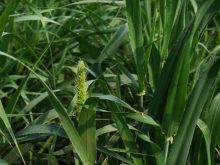MarketsFarm — The hot and dry 2021 growing season cut significantly into Canada’s barley production, with the weather also leading to higher protein levels for what was harvested.
“It will be an extremely tight and difficult year for the malt processors and ultimately for the brewers as well,” said Peter Watts, managing director of the Canadian Malting Barley Technical Centre (CMBTC) in Winnipeg.
“Not only did the hot, dry summer lead to a significant reduction in yields, it also impacted quality,” said Watts, noting higher protein levels were a big issue this year.
Read Also

Brazil to reap record soy crop in 2025/2026, increase exports
Brazil’s Conab said the country will reap a record soybean crop of 177.6 million tons in the 2025/2026 harvest year, according to data released on Thursday.
The rains that eventually came hit right at harvest time, “adding insult to injury” by leading to quality downgrades.
Total Canadian barley production in 2021-22, which includes feed barley, was estimated at 7.1 million tonnes by Statistics Canada. That compares with the 10.7 million tonnes grown the previous year.
Preliminary data from the Canadian Grain Commission show average protein levels for barley selected for malting in 2021 coming in at 12.8 per cent. That’s the highest of the past decade and well above the 10-year average of 11.7 per cent.
Maltsters typically like lower-protein barley, and Watts noted they are expanding their specifications in order to account for the higher protein levels. “Stuff that normally wouldn’t be accepted, will be accepted this year,” said Watts.
Higher-protein malt barley create processing challenges, including reducing alcohol extraction levels, altering water absorption, and leading to hazy beer.
The larger brewing companies may adjust their recipes to use more adjuncts, such as rice or corn, to compensate for the tighter barley supplies, but Watts said craft brewers don’t have that option.
The CMBTC is currently working with higher-protein samples to come up with modifications maltsters and brewers can use to adapt to this year’s crop, Watts said.
Some export customers do like higher-protein malt barley than is typically used in North America and would be a potential buyer for higher-protein grain in a year with more normal yields, but Watts expected export movement would be down in 2021-22.
“We’re just so short this year, there isn’t enough malting barley to go around,” he said.
“We’re in uncharted territory… people are not often forced to work with this kind of quality.”
While there will be challenges, one possible bright spot to come out of the year was the fact that maltsters will be forced to work with newer varieties that they may not have selected in the past, offering opportunities for those varieties to gain traction, Watts said.
Research into how the different varieties fared this growing season was ongoing, he added, with results and recommendations for 2022 to come shortly from the CMBTC.
— Phil Franz-Warkentin reports for MarketsFarm from Winnipeg.















